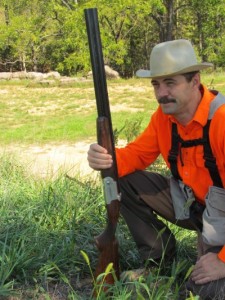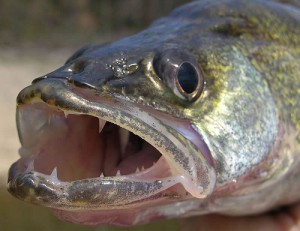The following is a very interesting article by Daniel Xu of Outdoor Hub that would probably appeal to Kansas Wildlife Federation members:
By Daniel Xu
OutdoorHub
Leaders of Conservation:
Vanishing Paradise Outreach Coordinator Andy McDaniels
This interview with Vanishing Paradise Sportsmen Outreach Coordinator Andy McDaniels is part of OutdoorHub’s Leaders of Conservation series, in which we sit down with leaders of the North American conservation movement to learn more about the stories behind their organizations and people.

This week we talk to Vanishing Paradise’s Andy McDaniels about one of
America’s most endangered regions.
The Mississippi River Delta is known by many names. It has been called at one time or another the “Most Southern Place on Earth” and the “Sportsman’s Paradise.” The delta is one of North America’s most diverse ecosystems for fish and wildlife, all shielded by coastal marshes, forests of cypress trees, and barrier islands. The delta’s wetlands are vital stops for birds flying through the Central and Mississippi flyways and may provide shelter to as many as 10 million waterfowl every year. Yet this jewel of the South is in danger of disappearing.
“It’s probably one of the biggest conservation issues of our time. It’s an issue where if Theodore Roosevelt was alive, he would certainly be engaged in it,” Andy McDaniels told me.
Andy is the Sportsmen Outreach Coordinator for Vanishing Paradise, a program dedicated to restoring the delta launched five years ago by Ducks Unlimited and the National Wildlife Federation. The ultimate goal of the program is to reconnect the Mississippi River with its wetlands and rebuild the delta’s forests, marshes, and barrier islands. To do that, Andy intends on unifying the voice of sportsmen and women across the country to support the restoration of the delta. Time is running out, though.
“I was hired to start uniting industry folks and grassroots people to get behind these issues. The Mississippi River had already lost the size of the state of Delaware since the 1930s and it has most certainly made an impact,” Andy shared.
It took more than 7,000 years to create the delta we know today. The Mississippi slowly drew sediment from the interior of the country and deposited it in the Gulf, building up land for vegetation to take root. There are a number of factors that led to the delta’s decline, but Andy said the most visible reason is man-made.
“How this started was that in the 1930s levees were put up in the Mississippi River, and these levees prevented floods,” Andy explained. “Flooding is what built up the wetlands in the first place. It was thousands of years of sediment building, and all of a sudden it was halted. That sediment just washes straight out. Common sense is that if you open up areas in the levees flooding could rebuild the sediment in the marsh.”
The system of levees and floodways in the lower Mississippi River is actually one of the largest in the world, and its construction has had profound consequences that its architects never envisioned. The levees were built in the wake of the Great Mississippi Flood of 1927. As that name would suggest, the 1927 flood was a force of destruction that swept across the South and reached as far as Ohio. It dumped more than 27,000 square miles of water across the country and caused more than $400 million in damage. It remains the most destructive river flood in American history, and shortly afterwards the US Army Corps of Engineers set to stop such a flood from ever happening again. The Mississippi was shackled.
“It stopped the flooding and the intention was good, but good intentions can turn into bad situations for wildlife. This indeed could be the largest example of that,” Andy said sadly.
Without the lifeline of the river, the delta’s wetlands starved and started to deteriorate. Without the protection of the wetlands, Hurricane Katrina and Rita devastated the coast.
“I don’t know exactly how much Hurricane Katrina cost the American public, but it was a lot,” Andy said.
Vanishing Paradise’s master plan suggests building a new coastline. To do that, sediment must be diverted accordingly, barrier islands have to be rebuilt, and historic ridges reestablished through dredging and plant placement. In short, these diversions will mimic what had occurred thousands of years before the levees were put in and allow the river to build up new land.
But why should a hunter in Michigan or an angler in New York care?
“A duck doesn’t know when it’s flying from Michigan to Wisconsin, or from Arkansans into Louisiana. It’s all about the big picture and when you’re looking at waterfowl habitat of this magnitude, it’s a national issue,” Andy said.
Ducks aren’t the only species that relies on the wetlands. Largemouth bass, oysters, shrimp, crabs, northern shovelers, snow geese, Louisiana black bears, green sea turtles, to name a few, are all connected to the ecosystem one way or another. What happens in the Mississippi Delta will ripple throughout the South and beyond.
Andy has been a hunter and conservationist since a very early age, and he says that sportsmen are the natural stewards of the land. He has led the Oklahoma Wildlife Federation—and organization founded by his grandfather—for more than 10 years and he recognizes the need to mobilize sportsmen behind the plight of the Mississippi Delta. Andy told me that first and foremost, sportsmen need to be made aware of what is happening in the delta and how they can help turn things around.
“My grandfather taught me when I was very young about conservation, and he made it very simple to understand. He said ‘Andy, it’s nothing more than the wise use of what God has given us.’ That has remained in my mind and has been more driving force since I was a little boy,” Andy said, reminding me that some of the greatest conservation victories in North America over the past 100 years were due to sportsmen. “When my grandfather was a young boy in the state of Oklahoma, there were no deer or turkey. There weren’t any geese and very few ducks. The market hunters had pushed waterfowl to the very brink. My grandfather worked very hard and very diligently with other like-minded folks to address this, and now we have abundant populations.”
See how you can help at http://vanishingparadise.org/.
We would like to thank Andy for taking the time to talk with us. For more profiles of leaders of conservation, please read our recent interview with NBCI Director Don McKenzie.
Image courtesy Andy McDaniels



